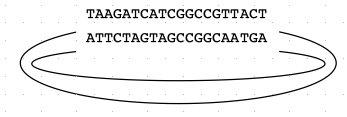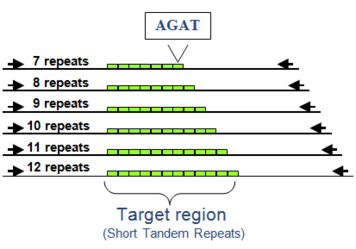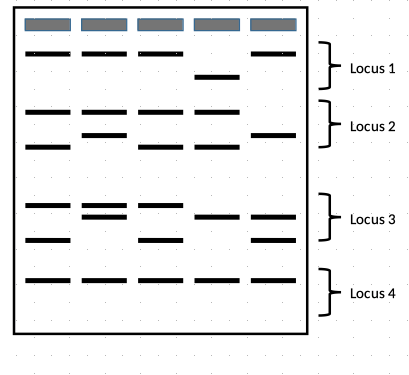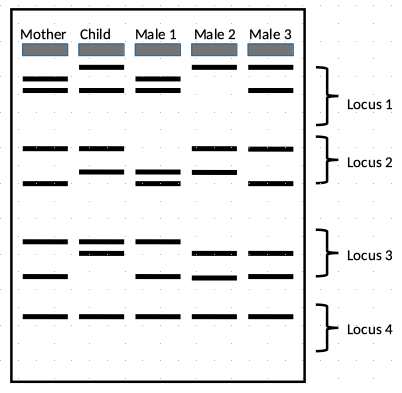Chapter 20 – Biotechnology
OBJECTIVE: Describe the process of creating recombinant bacterial cells
- What are restriction endonucleases (aka restriction enzymes)?
- What is meant by ‘cloning’?
-
Imagine you have the following plasmid:

You want to cut the plasmid with the restriction endonuclease EagI which cuts at the following site:

… and insert the following DNA between two restriction sites.
ATTCGCGGCCGAATTCGGCCGAA TAAGCGCCGGCTTAAGCCGGCTTIdentify where the plasmid would be cut. Then identify where the linear insert would be cut (2 locations). Redraw the plasmid with the inserted sequence. Show where the sticky ends are and clearly identify the inserted sequence.
- You decide that you would like to design a bacterium that produces growth hormone so that you can sell it and be rich. You manage to cut out the entire gene from a human cell and insert it, as above, into a plasmid. After inserting the plasmid into E. coli, you find that no gene product is produced. After sequencing the inserted gene, you find that it is about eight times as long as you thought it should be. What difference between eukaryotic and prokaryotic genes did you forget to consider (and accounts for the excessive DNA in eukaryotic genes)?
-
Once you realize your mistake, you isolate mRNA from your human cells and use reverse transcriptase to create _______________________. Unlike your previous attempt, the resulting DNA does not contain introns.
OBJECTIVE: Describe gel electrophoresis and what it accomplishes OBJECTIVE: Describe DNA fingerprinting using tandem repeating sequences
-
Short tandem repeats are short sequences (2-6 bases long) that repeat themselves in tandem (adjacent to one another). See Figure 1. Within a population, STRs are highly varied, and there are often many different alleles present.

Figure 1: Short tandem repeats If an individual is heterozygous, he/she will have 2 alleles, and these alleles will differ only in the number of repeated units. Since the 2 alleles are different sizes, they can be separated and visualized by gel electrophoresis.
When separating by gel electrophoresis (see Figure 2 below), a longer allele (one containing more repeats) will travel ____________ on the gel than a shorter allele (one with fewer repeats).

Figure 2: DNA Fingerprint of crime scene. The DNA recovered from the crime scene (evidence) is in lane 1 (on the left) and the DNA of 4 suspects is shown in the 4 lanes to the right. This gel shows 4 loci. On a gel, a homozygote will show ______ bands and a heterozygote will show _______ bands.
- Indicate on the gel which is the positive and negative electrode.
- Which direction is the DNA moving?
- Indicate whether larger alleles are towards the top of the gel or whether they have moved further towards the bottom.
- At locus 1, the evidence DNA shows a suspect that is ______(het/hom).
- At locus 2, the evidence DNA shows a suspect that is ______(het/hom).
- Indicate which lane matches the DNA from the crime scene.
-
Look at Figure 3. For locus 1, figure out which allele in the child comes from the mother. The child’s other allele must come from the father. Eliminate any potential males from the possibility of being the child’s father. Figure out who the father is among the 3 possible males.

Figure 3: DNA Fingerprints of a mother (lane 1), a child (lane 2) and 2 potential fathers (lanes 3&4) OBJECTIVE: Understand the polymerase chain reaction (PCR)
- Why are primers needed in PCR (see Fig B10.4, p 41)?
- If you start with 1 double-stranded DNA and PCR was 100% efficient, how many double-stranded molecules would you have after:
- 1 PCR cycle __________
- 2 cycles __________
- 10 cycles __________
- 30 cycles __________
- Why is polymerase needed for PCR?